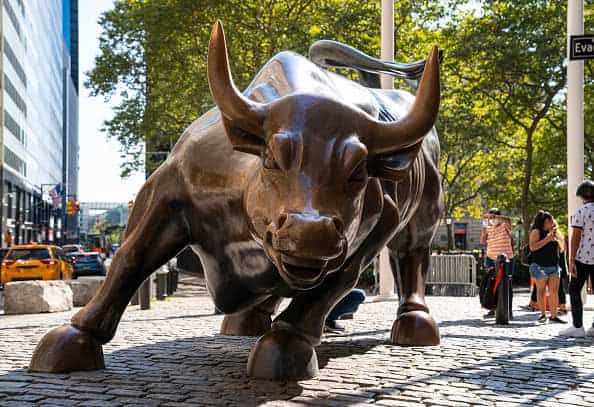
One year ago Tuesday, a new bull market was born. Powered by unprecedented stimulus, stocks crawled out of their deep pandemic rout and started sprinting.
History indicates that after big bear market declines, strong bull markets usually follow with gains carrying into a second year. However, investors should expect a smaller return over the next 12 months with a choppier road to get there.
On March 23, 2020, the S&P 500 hit its bottom after the Covid crisis sent the equity benchmark tumbling 30% in 22 days, the biggest decline in such a short time. There have been five other bear-market sell-offs of 30% or more since World War II, and the market has been up every single time in year two with a near 17% return on average, according to data from LPL Financial.

Still, the first year’s comeback rally is usually hard to top. Only in the aftermath of the 1987 crash did stocks advance more during year two than year one, according to the data. Plus, the second year of a new bull market is prone to pullbacks with an average drawdown of 10%, LPL said.
The S&P 500 has bounced about 80% from its March bottom, marking the best start to a new bull market on record, LPL data showed. This historic beginning could open the door for sophomore slumps and more volatility on the horizon.
“Embarking on the second year of the current bull market could be just as exciting for investors, but it is easy to question if the strength will continue,” said Lindsey Bell, chief investment strategist at Ally Invest. “Think of the sports free agent who disappoints after scoring the nine-figure contract, or the sequel that just doesn’t live up to the original.”
4% gain from here?
Wall Street’s consensus year-end target for the S&P 500 stands at 4,099, representing a 4% gain from Monday’s close of 3,940.59, according to the CNBC Market Strategist Survey that rounds up 15 top strategists’ forecasts.

The bull market was officially declared when the S&P 500 wiped out its pandemic losses and reached a record closing high on Aug. 18, then the beginning of a bull cycle was traced back to the market trough with the benefit of hindsight.
Still, the “black swan” event of 2020 makes the current bull market one of a kind. Unlike the past few crises where the malfunction of the financial markets was the culprit, this time the downturn was triggered by a pandemic. And in contrast to the slow and steady recovery in the previous cycles, this rebound has been extraordinarily rapid, thanks to trillions of dollars of aid from Congress and the Federal Reserve.
“This is the first bull market that any of us have been through where it’s been essentially manufactured by the government and by the Fed,” said Tom Essaye, founder of Sevens Report. “The huge stock gains didn’t come organically. They were essentially decreed by the government taking on enormous amounts of debt and deficits to spur economic activity. That does change the outlook going forward.”
While history is on the market’s side, many believe that the lasting power of the new bull hinges on its ability to sustain the rally without massive amounts of stimulus. A new round of stimulus checks just started to hit Americans’ bank accounts this month. Once the stimulus boost fades, Wall Street is betting that corporate earnings will then do the heavy lifting and keep the lofty promises that stock prices have made.
What are the risks?
At its current level, the S&P 500 is trading more than 21 times projections for next year’s earnings, a level not seen since 2000, according to FactSet.

“You are essentially transitioning from a government-infused rally to what we hope would be an organically economically infused rally where the economy reopens and that in turn just feeds on itself,” Essaye said.
Meanwhile, inflation expectations are rising amid the historic economic reopening and massive stimulus, making it harder to justify stocks’ lofty valuations. The concern has manifested itself in the year-to-date underperformance of the tech-heavy Nasdaq Composite as higher inflation and interest rates erode growth-oriented companies’ future earnings.
Another possible threat as this bull market ages could be higher tax rates with President Joe Biden set to propose higher duties to fund a grand infrastructure program. Goldman U.S. equity strategist David Kostin warned investors that Biden’s tax plans could curb S&P 500 per-share earnings by 9%.
Biden has signaled his willingness to raise the corporate tax rate to 28% in a partial rollback of President Donald Trump’s 2017 tax overhaul. Meanwhile, Biden also endorsed upping the top marginal tax rate to 39.6% and taxing capital gains and dividends at the higher ordinary income tax rate.
Wells Fargo believes that corporate tax rates will rise but fall short of Biden’s 28% proposal, and any damage from higher taxes will be softened by stronger corporate earnings.
“We believe record-level economic growth and fiscal spending will support higher profits, potentially offsetting the drag from a higher tax regime,” Wells Fargo investment strategy analyst Ken Johnson said in a note.























